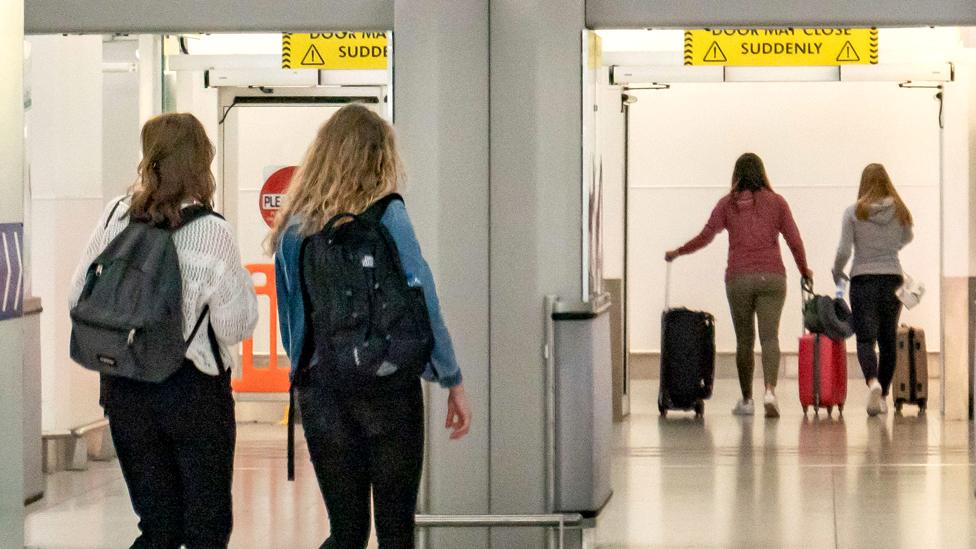Migration: Moving target Tories keep trying to hit
- Published
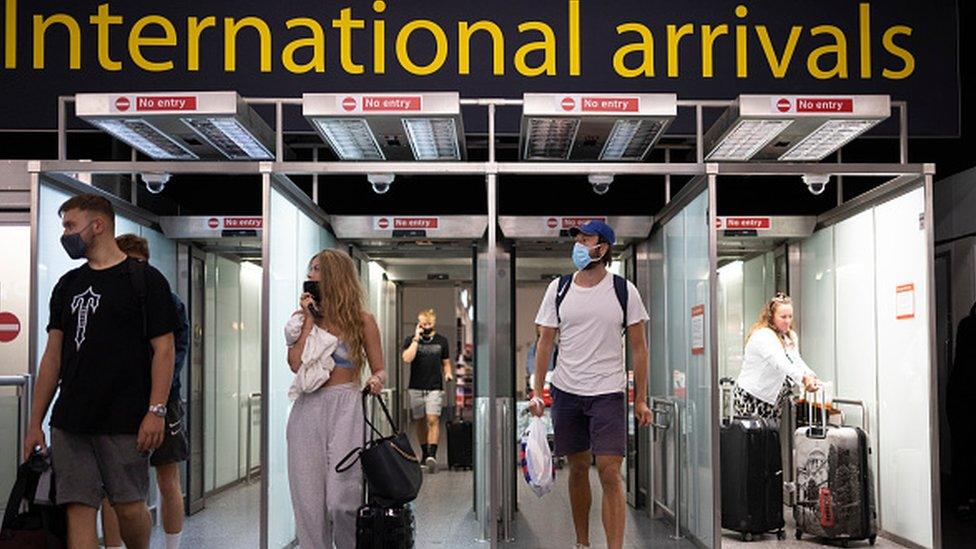
How did successive Conservative prime ministers fail to fulfil what, at first glance, looks like a simple pledge - and why did they make it in the first place?
In 2010, the Conservative Party's general election manifesto contained a promise to get net migration down to the "tens of thousands a year".
One year later, former prime minister David Cameron pledged: "Our borders will be under control and immigration will be at levels our country can manage. No ifs. No buts."
It's a promise that came back to haunt the Conservatives - as the target receded further and further into the distance.
As Thursday's Office for National Statistics data, external show, net migration is nowhere near that figure. In fact, migration added 606,000 to the UK's population in 2022, the highest number on record and sharply up on recent levels.
There are a range of factors behind that rise, as we report here, and a lively debate over the benefits and disadvantages of immigration.
But for some years now, the focus has not been on immigration per se, but on "net migration" - the difference between those entering and leaving the UK.
'Time for change'
It was David Cameron, who when he became prime minister in 2010, introduced the concept to the wider public.
"Net migration was not really a metric that people thought about or used in the run up to 2010," says Rob McNeil, deputy director of the University of Oxford's Migration Observatory.
"It created the idea that management of migration was a technocratic process. The reality is, it's much more complicated than that."
Mr Cameron was keen to curb immigration but, he argued, what voters really cared about was not the numbers coming from overseas but the overall growth in the size of the UK's population.
In a 2007 speech, he stressed the "positive impact on our economy" of immigration but added that it was "time for change".
"We need policy to reduce the level of net immigration," he declared.
Unfortunately for Mr Cameron, his chosen measure was already on an upward trajectory.
And there were question marks about how much control any government could exert over the number of people emigrating from the UK - a key component of net migration.
There was a time when that number was very high, as Britons left for pastures new. As a result, UK net migration was routinely below zero before the 1990s.
But since 1994, immigration to the UK has exceeded emigration every year to date.
The figures show that immigration started to rise more sharply under Tony Blair's New Labour government.
'Trickle to flood'
Net migration rose above 200,000 for the first time in 2004, after Mr Blair's government opened up the UK to workers from new EU member states in eastern Europe.
"Suddenly from being a steady trickle, immigration turned into a flood," said Damian Green, the former immigration minister and Conservative MP. "It became a huge political issue."
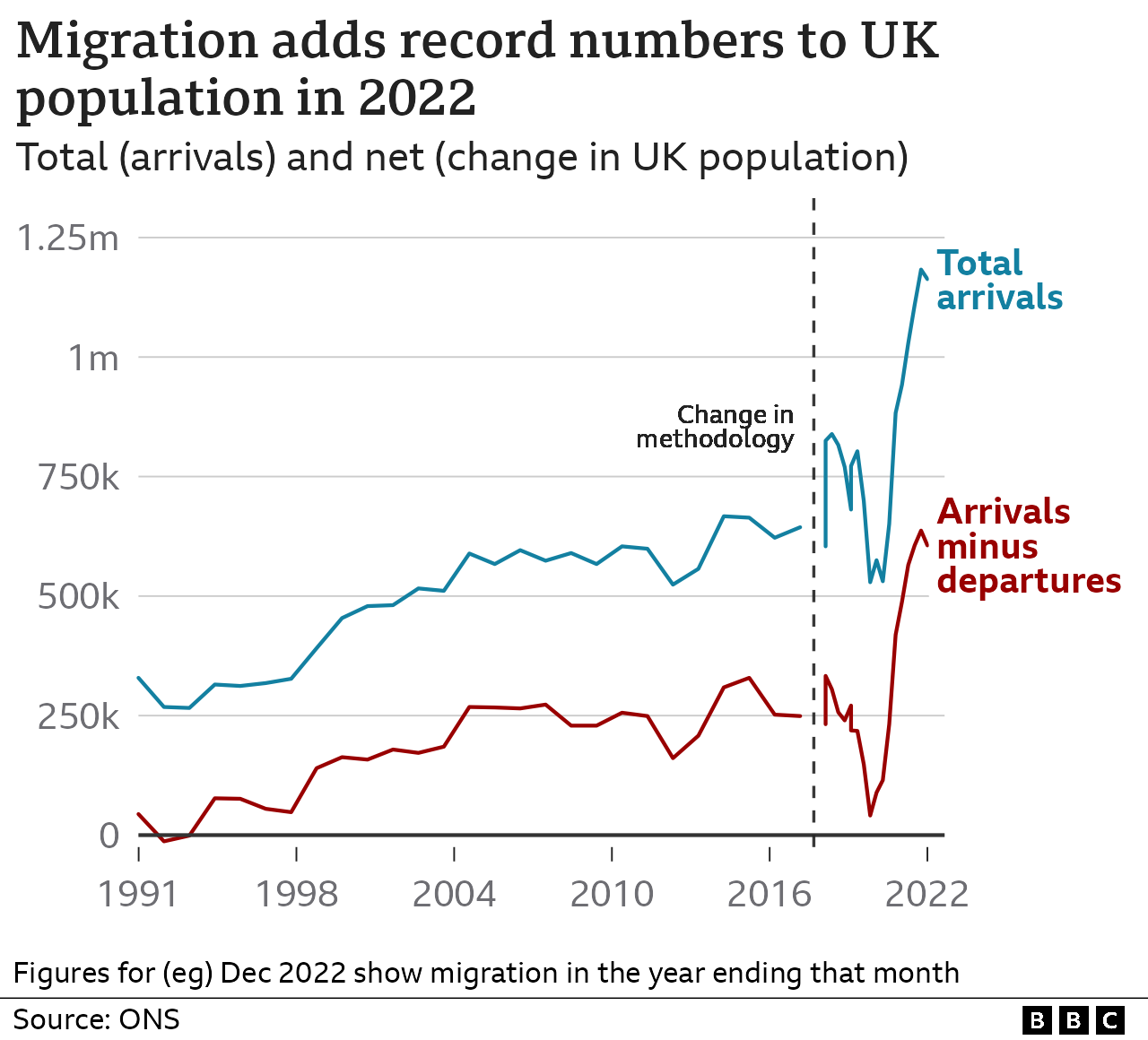

Analysis by the Migration Observatory, external in 2011, found government policies were not on track to reduce net migration to the tens of thousands.
And yet Mr Green - who was the immigration minister at the time - continued to insist the government was on course to meet its target.
"It was doable," said Mr Green.
"I remember once seeing a projection in the Home Office that showed if everything stayed the same, by the 2015 election, we'd have net migration down to 116,000. It wasn't completely unrealistic."
The promise of net migration in the tens of thousands appeared again in the Conservative Party's 2015 manifesto, external.
Alongside that manifesto promise was one of a referendum on the UK's membership of the EU. With the Eurosceptic party UKIP rising in the polls, Mr Cameron was looking exposed on immigration.
A migrant crisis, partly triggered by conflicts in the Middle East, was deepening in Europe, while UKIP was gaining political momentum and a bigger audience for its opposition to "mass immigration" ahead of the 2015 general election.
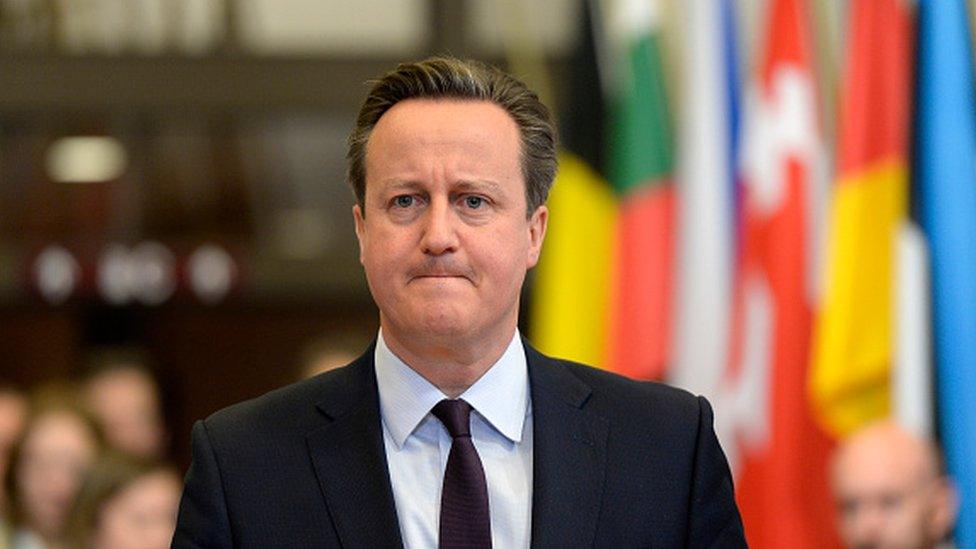
David Cameron said it was "time for change" on migration when he was opposition leader
Having won a majority at that election, Mr Cameron announced the Brexit referendum in 2016 and struck a deal to redraw the terms of the UK's EU membership.
Concessions on immigration, including restrictions on benefits to EU migrants, formed the backbone of Mr Cameron's deal, but it wasn't enough to convince enough voters to back Remain.
Instead, the Leave campaign - with its contentious warnings of an influx of migrants from the EU - proved more compelling to the 52% who voted for Brexit.
Richard Tice, a prominent Eurosceptic and leader of Reform UK, said the Conservative MPs who backed Brexit promised they would take control of migration following the referendum.
"And we believed their promises," Mr Tice said. "The data has shown that actually, they've abandoned those promises.
"We're brought up to trust what politicians say. But when they continually fail to do it, that trust evaporates."
No safety in numbers
The promise remained unkept under former prime minister Theresa May, who held the line of "net migration down to the tens of thousands" in the Conservative Party's 2017 manifesto, external.
Only in its 2019 manifesto, external, when Boris Johnson succeeded her as Tory leader, did the party ditch the under-100,000 pledge.
Instead, the Conservatives - rather more vaguely - said "the overall numbers will come down" and "we will ensure that the British people are always in control".
Liz Truss's tenure as prime minister was so short - just 49 days - and she didn't have a chance to set out her stall on migration.
Migration has slipped down the political agenda, with YouGov polling, external showing immigration and asylum ranking behind the economy and housing as the most important issues facing the country.
So far, the current prime minister, Rishi Sunak, has mostly focused on curbing illegal immigration and stopping small boats crossing the English Channel.
Unlike his predecessors, Mr Sunak has so far shied away from putting a figure on what net migration should be, only calling the current level "too high".
Labour leader Sir Keir Starmer has similarly refused to set a target for net migration.
"I'm not putting a specific number on it," he said this week. "The only thing we know about those targets is that they're routinely missed."
As Mr Cameron found out the hard way, making commitments on something as difficult to control as the movement of people can create hostages to fortune, and leave promises unfulfilled.
Related topics
- Published25 May 2023
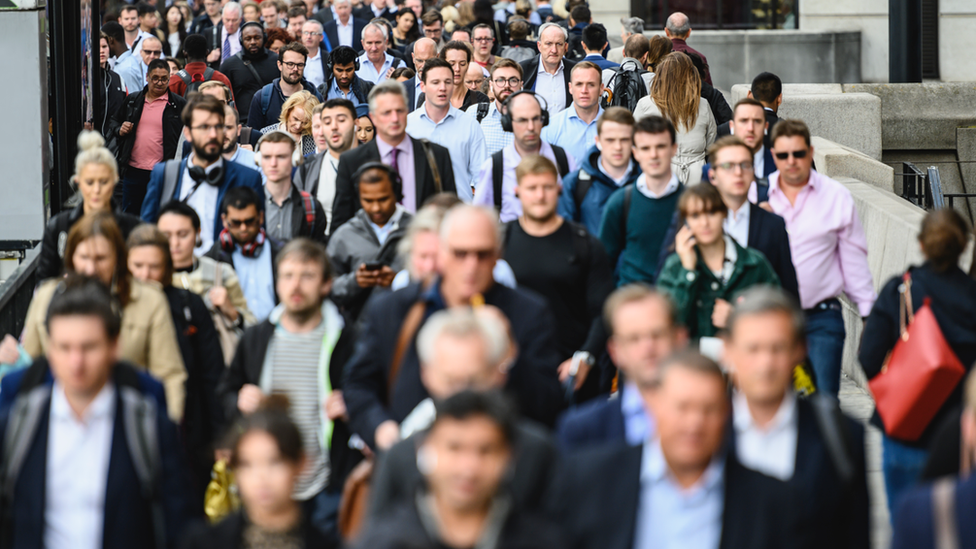
- Published19 May 2023
